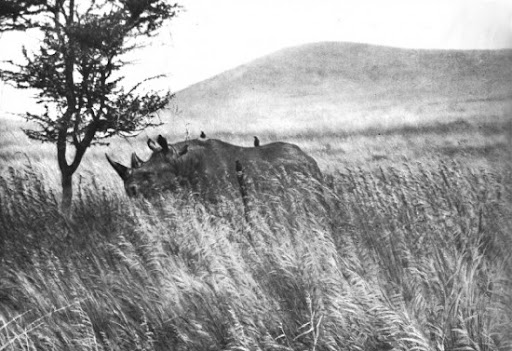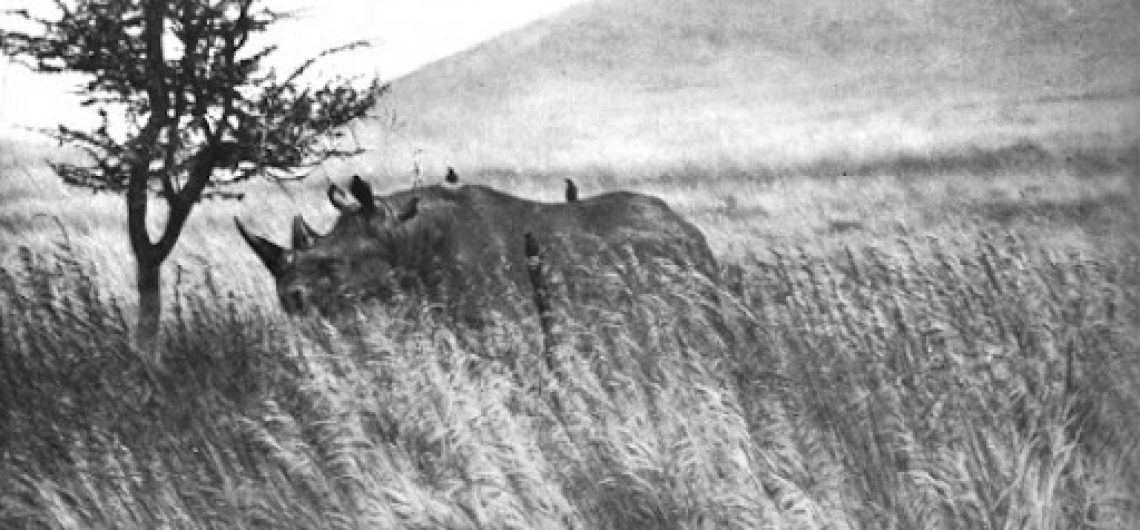The disappearance of the black rhinoceros from Kilimanjaro National Park, or more accurately, the dwindling numbers of Rhinos in Tanzania, can be attributed to a combination of factors, though direct evidence from Kilimanjaro itself is sparse:
The black rhinoceros, once a sight to behold even at the base of Mount Kilimanjaro, has vanished from the region due to relentless hunting pressures. Historical accounts tell of Count Teleki, an explorer in East Africa, who reportedly shot down an astonishing 89 black rhinos during his expeditions, with four falling to his gun in a single day. This level of hunting, emblematic of a broader trend of over-hunting, has led to the local extinction of these magnificent animals around Kilimanjaro.

The black rhinoceros, known for its solitary nature and distinctive hooked lip, was once part of the diverse wildlife tapestry around the mountain. However, the demand for rhino horn, driven by both traditional medicine and ornamental uses, fueled a poaching epidemic that decimated populations across Africa. The story of Count Teleki’s exploits underscores a period when wildlife was seen more as trophies than as integral parts of ecosystems.
Mkomazi National Park and the Ngorongoro Crater are one of the few places where you can see endangered black rhinos in the country. Black rhinos, also known as hook-lipped rhinos, are native to eastern and southern Africa, including Tanzania. In Kenya, near Mount Kenya, there is a rhino sanctuary at Ol Pejeta in Laikipia.
Today, the absence of black rhinos in and around Kilimanjaro National Park serves as a stark reminder of the consequences of unchecked hunting and the broader implications for biodiversity. Efforts to relocate surviving rhinos to safer sanctuaries and rigorous anti-poaching measures are now in place, but the sight of a black rhinoceros near Kilimanjaro remains a memory of the past, a testament to the need for conservation and the fragility of wildlife populations in the face of human activities.
- Poaching: Historically, poaching for rhino horn has been the primary reason for the decline of black rhinoceros populations across Africa. Rhino horn is valued in traditional medicine in some cultures and as a status symbol, leading to high demand on the black market. Although specific posts or articles might not directly mention Kilimanjaro, the general trend in East Africa points towards poaching as a significant threat.
- Habitat Loss: While Kilimanjaro National Park itself might not have seen significant habitat loss due to its mountainous terrain, the surrounding areas, including what might be considered part of the broader ecosystem, have experienced changes due to human settlement, agriculture, and livestock grazing. The encroachment of pastoralists into game reserves, as noted in some contexts, could indirectly affect rhino populations by reducing their habitat or increasing human-wildlife conflict.
- Conservation Efforts and Relocation: Efforts to save the black rhino have included relocation to safer, more secure areas or sanctuaries where they can be better protected. For instance, the Mkomazi Rhino Sanctuary was established to protect and breed rhinos, suggesting that some rhinos might have been moved from less secure areas to this sanctuary, effectively “vanishing” from their original range but not from existence.
- Lack of Specific Data: There’s a notable absence of direct, up-to-date information specifically detailing the disappearance of black rhinos from Kilimanjaro National Park. This might be due to several reasons:
- Confusion with Mkomazi: Some information might conflate or overlap between Kilimanjaro National Park and Mkomazi National Park, which is nearby and has had well-documented efforts for rhino conservation.
- Low Visibility: Black rhinos are naturally elusive, and their numbers might have dwindled to a point where they’re rarely seen, leading to an assumption of disappearance rather than confirmed absence.
- General Decline in Numbers: Across East Africa, black rhino numbers have plummeted due to the reasons mentioned. While Kilimanjaro might not be specifically highlighted in recent data, the general trend of decline could be assumed to have affected its population as well.
From the information available, especially considering the broader context of rhino conservation in Tanzania:
- Relocation for Conservation: Rhinos might have been moved to safer areas or sanctuaries like Mkomazi, where they’re more protected against poaching.
- Poaching Pressure: The general threat of poaching could have led to a local extinction or near-extinction in less secure areas.
Related stories
- The 4 most unusual Animal Sightings on Mount Kilimanjaro
- Fauna of Rwenzori Mountains, wildlife and animals to see in Uganda
- Kilimanjaro Safaris at Disney’s Animal Kingdom are they any better than real-life Safaris near Mount Kilimanjaro?
- Endemic Animals of Mount Kilimanjaro
- Wildlife of Mount Kilimanjaro, what animals can you see?
- Real life lessons from Walt Disney’s Lion King Adventure Movie that features Mount Kilimanjaro
- Jambo Bwana! The Hakuna Matata Kilimanjaro Song
![]()

